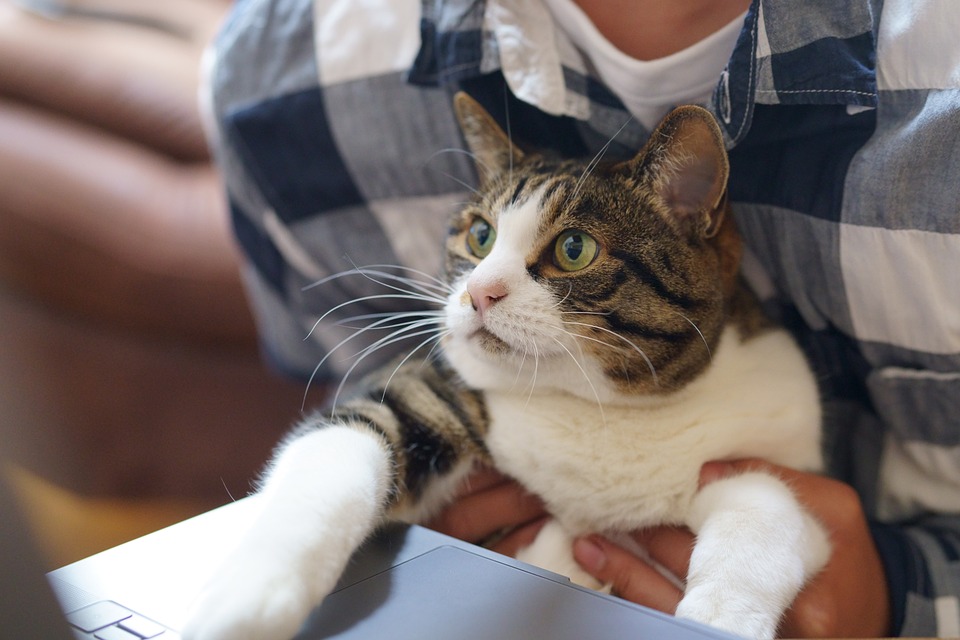Title: Teaching Your Cat to Stay Calm When Left Alone: Expert Tips and FAQs
Introduction
Cats are known for their independent nature, but they can also experience anxiety when left alone. Teaching your feline friend to stay calm during your absence is essential for their well-being. In this article, we will explore effective strategies to help your cat feel secure and content when you’re away. Additionally, we’ll address some frequently asked questions related to this topic.
Understanding Cat Separation Anxiety
1. Recognizing the Signs of Cat Separation Anxiety
– Excessive vocalization (meowing and yowling)
– Destructive behaviors (scratching and chewing)
– Changes in elimination habits
– Restlessness or pacing
2. Common Causes of Separation Anxiety in Cats
– Change in routine or environment
– Traumatic experiences
– Lack of socialization
– Genetic predisposition
3. The Importance of Addressing Separation Anxiety
– Chronic stress can lead to various health issues
– Destructive behaviors can damage property
– Maintaining a calm environment benefits both the cat and the owner
Preparing Your Cat for Alone Time
1. Gradual Introductions: Making Alone Time Less Stressful
– Start with short periods of separation and gradually increase the duration
– Use positive reinforcement to reward calm behavior during alone time
2. Creating a Safe and Comfortable Environment
– Provide a designated area with familiar objects and scents
– Ensure access to food, water, and litter box
– Use hiding spots or cozy beds for added security
3. Enrichment Activities to Keep Your Cat Occupied
– Interactive toys, puzzles, and treat-dispensing toys promote mental stimulation
– Consider installing a window perch or providing a scratching post
4. Positive Associations: Associating Your Departure with Rewards
– Offer treats or playtime before leaving to create positive associations
– Use pheromone diffusers or calming music to create a soothing atmosphere
Training Techniques for Calm Alone Time
1. Desensitization: Gradual Increase in Alone Time
– Practice leaving and returning multiple times a day to desensitize your cat
– Gradually increase the time spent away to build their tolerance
2. Counterconditioning: Changing Negative Associations
– Associate your departure with something positive, such as a special treat or favorite toy
– Engage in a routine before leaving to create a sense of predictability
3. Utilizing Calming Aids: Pheromone Diffusers, Music, and Toys
– Feliway diffusers release calming pheromones that can help reduce anxiety
– Calming music or white noise can create a soothing environment
– Toys that mimic natural prey can provide comfort and distraction
4. Interactive Toys and Puzzles to Promote Mental Stimulation
– Puzzle toys and treat balls can keep your cat mentally engaged
– Hide treats around the house for them to find during alone time
Addressing Common Challenges
1. Excessive Vocalization: Dealing with Meowing and Yowling
– Ignore attention-seeking behavior to avoid reinforcing it
– Provide interactive toys or puzzle feeders to redirect their focus
2. Handling Destructive Behaviors: Scratching and Chewing
– Offer appropriate scratching posts and toys to redirect their behavior
– Use deterrent sprays or double-sided tape to protect furniture
3. Litter Box Issues: Ensuring Proper Elimination Habits
– Have multiple litter boxes in different areas of the house
– Keep the litter boxes clean and easily accessible
Frequently Asked Questions (FAQs)
1. How long can I leave my cat alone without causing distress?
– The duration depends on the individual cat’s needs and temperament
– Start with short periods and gradually increase the time as they become more comfortable
2. Can I train an adult cat to be calm when left alone?
– Yes, cats of all ages can be trained with patience and consistency
– It may take longer for an adult cat to adapt to new routines compared to a kitten
3. Is it helpful to have a second cat for companionship?
– Some cats may benefit from the companionship of another cat
– However, it’s important to introduce them properly and ensure they get along
4. Are there any specific breeds more prone to separation anxiety?
– While all cats can experience separation anxiety, certain breeds may be more prone to it
– Siamese, Burmese, and Oriental breeds are known to be more predisposed
5. Should I consult a veterinarian if my cat’s anxiety persists?
– If your cat’s anxiety persists despite your efforts, it’s advisable to consult a veterinarian or animal behaviorist
– They can provide further guidance and potentially recommend medication or additional therapies
Conclusion
By employing the techniques and strategies outlined in this article, you can gradually help your cat become more comfortable and calm when left alone. Remember, every cat is unique, and it may take time to find the most effective approach for your feline companion. Stay patient, consistent, and observe your cat’s progress closely. If necessary, consult with a veterinarian or animal behaviorist for further guidance. Your cat’s well-being and happiness are worth the effort!








